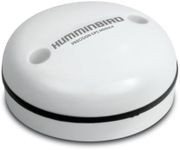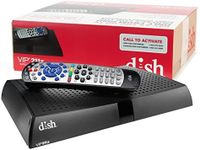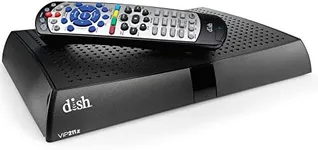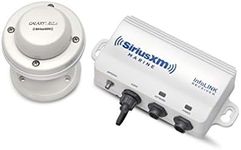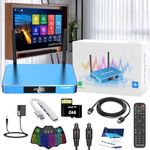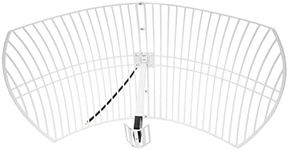Buying Guide for the Best Satellite Receivers
Choosing the right satellite receiver can significantly enhance your TV viewing experience. A satellite receiver is a device that receives signals from a satellite and converts them into a format that your TV can display. When selecting a satellite receiver, it's important to consider several key specifications to ensure you get the best fit for your needs. Understanding these specs will help you make an informed decision and enjoy a seamless entertainment experience.Tuner TypeThe tuner type determines the kind of signals your receiver can process. There are mainly two types: DVB-S (Digital Video Broadcasting - Satellite) and DVB-S2. DVB-S2 is the newer standard and offers better compression and more efficient use of bandwidth, which means better picture quality and more channels. If you want the latest technology and more channels, go for a receiver with a DVB-S2 tuner. If you are okay with fewer channels and slightly lower quality, a DVB-S tuner will suffice.
HD CompatibilityHD compatibility refers to the receiver's ability to process high-definition signals. HD receivers provide a clearer, more detailed picture compared to standard definition (SD) receivers. If you have an HD television and want to enjoy high-definition content, you should choose an HD-compatible receiver. If you are using an older TV that doesn't support HD, an SD receiver will be adequate.
PVR FunctionalityPVR (Personal Video Recorder) functionality allows you to record live TV to watch later. This is useful if you want to record your favorite shows or movies and watch them at your convenience. Some receivers come with built-in hard drives for recording, while others allow you to connect an external USB drive. If you often miss live broadcasts and prefer to watch them later, a receiver with PVR functionality is a good choice.
Connectivity OptionsConnectivity options refer to the various ports and interfaces available on the receiver. Common options include HDMI, USB, Ethernet, and RCA. HDMI is essential for HD video and audio, while USB ports are useful for connecting external storage devices. Ethernet ports allow for internet connectivity, which can be useful for accessing online content and updates. Choose a receiver with the connectivity options that match your current and future needs.
EPG (Electronic Program Guide)The EPG is a feature that provides a schedule of upcoming TV programs. It allows you to see what’s on now and what’s coming up, making it easier to plan your viewing. A good EPG will be easy to navigate and provide detailed information about each program. If you like to plan your TV watching in advance, look for a receiver with a comprehensive and user-friendly EPG.
Multimedia SupportMultimedia support refers to the receiver's ability to play various media formats, such as video, audio, and images. This can be useful if you want to use your receiver as a media player in addition to watching satellite TV. Check the supported formats to ensure compatibility with your media files. If you have a large collection of digital media, a receiver with extensive multimedia support will be beneficial.
Software UpdatesSoftware updates are important for keeping your receiver up-to-date with the latest features and security patches. Some receivers offer automatic updates via the internet, while others require manual updates. Regular updates can improve performance and add new functionalities. If you want to ensure your receiver remains current and secure, choose one that offers easy and frequent software updates.
